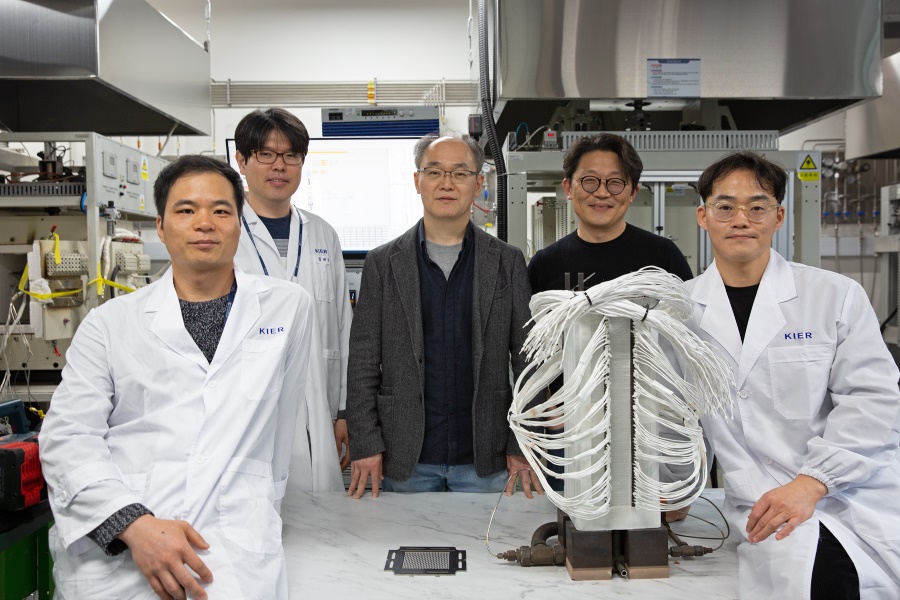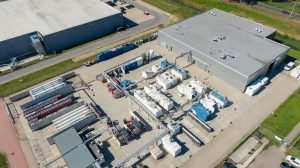In South Korea, several companies and government-funded research institutions are developing SOEC technology, but there is a considerable technological gap compared to leading groups abroad. In response, the KIER research team developed a domestic SOEC stack manufacturing technology through technological independence. They succeeded in producing cost-effective and stable performance by stamping metal separator plates with a specific pattern and applying technology to securely seal each cell. This approach ensures both affordability and reliable performance.
An SOEC stack is structured by layering ceramic cells, separator plates, and sealing materials. As the capacity of the stack increases, so does hydrogen production; however, this also means an increase in the number of components, leading to a higher overall manufacturing cost. Additionally, the economic viability also depends on how stably each cell performs, as maintaining uniform performance across all cells is essential to ensure hydrogen production efficiency.
The research team first improved the separator plate manufacturing technology to reduce manufacturing costs and shorten the production time. To prevent hydrogen and oxygen from mixing and to ensure they flow properly, channels must be created on the upper and lower surfaces of the separator plates. Currently, these channels are made by mechanically and chemically milling the material. To overcome this, the team applied a press forming method that creates these channels by pressing a pattern of projections, similar to stamping, with an irregular structure arrangement. While the existing process could produce a maximum of 100 separator plates per day, using the press forming method allows for the production of more than 1,000 plates per day, thus improving both the manufacturing cost and time.
Furthermore, to ensure that the electricity supplied to the stack is used without loss, the design maximizes the contact area between the cell and the separator plate, allowing each cell to perform uniformly and at an optimized level. Additionally, the application of brazing technology to securely seal the stacked components reduced the use of glass sealing material by half compared to conventional methods. This approach ensures that the stack can minimize hydrogen leakage even in the face of thermal shock or rapid temperature changes, thus maintaining stable performance.
The 8-kW single stack, manufactured using the research team’s technology, operated stably for 2,500 hours and produced 5.7 kg of hydrogen per day, demonstrating the largest hydrogen production capacity in Korea.
The developed manufacturing technology, which possesses both mass production capability and reliability, has been transferred to Samsung Electro-Mechanics, aiming to enter the SOEC field, and to Bumhan Fuel Cell, a company specializing in fuel cells. In the future, the companies that have acquired the technology and the research team are expected to accelerate domestication through collaborative research.
Dr. Ji Haeng Yu, the lead researcher, stated: “In a situation where most domestic SOEC-related companies are adopting advanced foreign technologies, the development of high-efficiency stacks using domestic materials and component technologies will play a crucial role in enhancing the independence and competitiveness of domestic technologies. Securing core water electrolysis technologies will accelerate the transition to a hydrogen economy and the achievement of carbon neutrality goals.”
This research was conducted with the support of the Korea Institute of Energy Research and the Material & Component Technology Development Project of the Ministry of Trade, Industry, and Energy.







